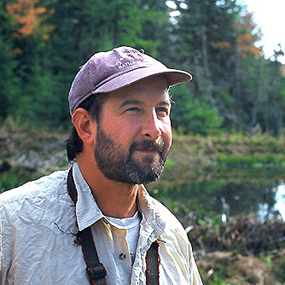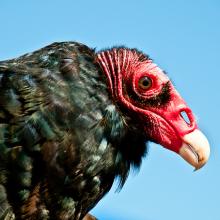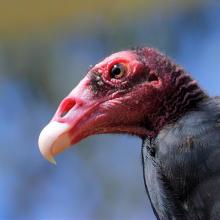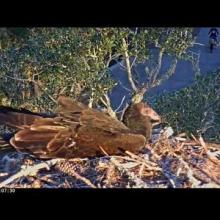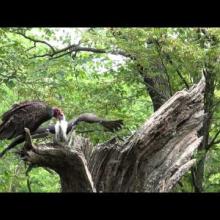

Join BirdNote tomorrow, November 30th!
Illustrator David Sibley and actor H. Jon Benjamin will face off in the bird illustration battle of the century during BirdNote's Year-end Celebration and Auction!
Before we see or feel spring, we often hear it first — in the testimony of a Red-winged Blackbird, the energy of a Song Sparrow, or the serenade of an American Robin. But across much of North America, an earlier sign of spring is the return of Turkey Vultures. In the U.S., you may see them as early as February or March. Unlike most of our returning birds, which migrate at night, Turkey Vultures migrate like hawks — in the daytime. They rise on warm spring updrafts, with a distinctive teeter from side to side. And then they glide — northbound.
BirdNote®
Turkey Vultures on the Move
Written by Bryan Pfeiffer
This is BirdNote.
Birds breathe life into spring. Before we see or feel the season, we often hear it first — in the testimony of a Red-winged Blackbird, the energy of a Song Sparrow or the serenade of an American Robin.
[Short chorus of the three songs]
But across much of the continent, an earlier sign of spring is a naked, ruddy head, gliding north on big wings. Turkey Vultures often precede the parade of migrants, like an advance team exploring the terrain.
When it comes to migration, the Turkey Vulture gets a head start on other species. Its winter range reaches fairly far north, especially along the coasts. During warm spells in winter, a few daring vultures might even drift as far north as Vermont or Oregon. But the first genuine migrants show up across the U.S. as early as February or March.
Unlike most of our returning birds, which migrate at night, Turkey Vultures migrate like hawks — in the daytime. They rise on warm spring updrafts, with a distinctive teeter from side to side. And then … they glide … northbound.
For BirdNote, I'm Michael Stein.
###
Bird sounds provided by The Macaulay Library of Natural Sounds at the Cornell Lab of Ornithology, Ithaca, New York. 209310 recorded by Julia Ferguson, 176250 recorded by Geoffrey A. Keller, and 193531 recorded by Richard Nelson.
BirdNote’s theme music was composed and played by Nancy Rumbel and John Kessler.
Producer: John Kessler
Executive Producer: Sallie Bodie
Narrator: Michael Stein
© 2017 Tune In to Nature.org March 2017/2020/2024
ID# TUVU-06-2017-03-07 TUVU-06


